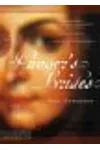Picture a Canadian storyteller who sailed across oceans and wove a 1,400-page epic about a 17th-century Mexican nun—meet W. Paul Anderson! With a life as vibrant as his prose, Anderson transformed his global adventures into Hunger’s Brides, a novel that blends history, mystery, and lyrical brilliance, earning him a unique place in literary circles.
Born in Canada, Anderson’s wanderlust and curiosity shaped his storytelling, making him a master of intricate narratives that span centuries and cultures. Let’s dive into the journey of this sailor-turned-author whose work continues to captivate readers with its depth and ambition.
The Making of W. Paul Anderson
In his early twenties, Anderson left Canada for a 15-year odyssey across Asia, Europe, and Latin America. He logged 25,000 miles as a sailor, crossing the Atlantic twice, and worked as a deckhand in Monte Carlo, a fruit picker in Switzerland, and a construction worker in Australia. These experiences infused his writing with a worldly perspective. Inspired by a 1988 encounter in Mexico, where a local introduced him to the poet Sor Juana Inés de la Cruz, Anderson began crafting what would become his magnum opus, Hunger’s Brides.
Settling in Calgary, he spent 12 years researching and writing, drawing on his travels and a deep fascination with history and human struggle. His diverse background—part adventurer, part scholar—gave his work a unique texture, blending gritty realism with poetic flourish.
W. Paul Anderson’s Unforgettable Stories
Anderson’s debut, Hunger’s Brides: A Novel of the Baroque (2004), is a literary behemoth at nearly 1,400 pages. It weaves the life of Sor Juana Inés de la Cruz, a 17th-century Mexican nun, poet, and scholar, with the modern tale of Beulah Limosneros, a troubled graduate student obsessed with Sor Juana. The novel explores themes of genius, oppression, and obsession, set against the vivid backdrop of colonial Mexico and contemporary Calgary. Critics praised its ambition, with Quill & Quire comparing it to Gabriel García Márquez’s masterpieces.
A shorter version, Sor Juana or the Breath of Heaven, distills the nun’s story for readers daunted by the original’s heft. Anderson’s style is lyrical yet dense, blending historical fiction with postmodern elements like diaries, poetry, and film scripts. His ability to capture Sor Juana’s voice—intelligent, rebellious, and poetic—makes her story resonate across centuries, while Beulah’s narrative adds a layer of psychological intrigue.
Excerpts of Hunger’s Brides appeared in publications like Queen Street Quarterly and Prairie Fire, and a dramatic reading was performed in Sor Juana’s convent in 1996 by Calgary’s One Yellow Rabbit theatre company. Anderson’s work, though niche, showcases his skill in crafting complex, culturally rich narratives.
Why W. Paul Anderson Matters
Anderson’s impact lies in his fearless ambition. Hunger’s Brides earned accolades, including the Writers Guild of Alberta Novel of the Year in 2005, a Kiriyama Pacific-Rim Prize Notable Book selection, and finalist nods for the Commonwealth Writers’ Prize and W.O. Mitchell Prize. His work introduced Sor Juana to new audiences, shedding light on a brilliant woman silenced by her era’s constraints. By blending past and present, Anderson invites readers to explore universal themes of knowledge, power, and resilience.
Though not a household name, Anderson’s novel remains a cult favorite among lovers of historical fiction and epic storytelling. His global perspective and sailor’s grit make his voice distinct, offering a fresh take on the human condition that lingers long after the final page.
- Key Work: Hunger’s Brides (2004)
- Awards: Writers Guild of Alberta Novel of the Year (2005), Kiriyama Pacific-Rim Prize Notable Book
- Hometown: Calgary, Alberta, Canada
Ready for an epic literary adventure? Snag Hunger’s Brides or its shorter counterpart, Sor Juana or the Breath of Heaven, and dive into W. Paul Anderson’s mesmerizing world of history and heart!
